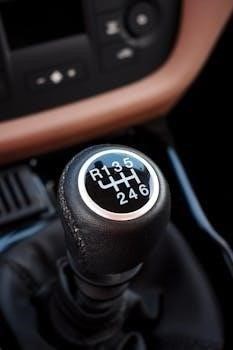
-
By:
- ophelia
- No comment
jumping out of gear manual transmission
Understanding Manual Transmission Jumping Out of Gear
Manual transmission jumping out of gear is a common issue for drivers. Several factors contribute to this problem, ranging from worn components. Linkage adjustments, and internal transmission wear all affect gear engagement. Addressing this issue promptly is very important to prevent further damage.
Common Symptoms of Gear Slippage
Recognizing the symptoms of gear slippage is crucial for early intervention. One of the primary signs is the gear lever spontaneously moving to the neutral position while driving. The shift is often accompanied by a clunking or grinding noise, which can be more pronounced. The vehicle may also experience a sudden loss of power and acceleration as the transmission disengages.
Drivers might also notice vibrations or unusual noises. These noises increase when the transmission is under load. Shifting gears may become more difficult, requiring extra force. Jerky or erratic movement can also occur; Regular inspections and attention to these warning signs can help in diagnosing and resolving issues.
Ignoring these symptoms will lead to more severe damage, potentially requiring expensive repairs or even a full transmission replacement. Addressing these symptoms early on will save money. It will also save time by preventing the need for extensive repairs.

Potential Causes of Manual Transmission Jumping Out of Gear
Several factors can cause a manual transmission to jump out of gear. These include worn synchronizers, faulty shift linkages, and damaged engine mounts. Internal transmission issues, like worn gears, and low fluid can also contribute.
Worn or Damaged Gear Synchronizers
Worn or damaged gear synchronizers are a primary cause of manual transmissions jumping out of gear. Synchronizers play a crucial role in matching the speeds of the gears. This allows for smooth engagement during shifting, reducing gear clashing and preventing premature wear; When synchronizers degrade, they lose their ability to effectively synchronize.
This leads to incomplete gear engagement. As a result, the transmission may slip out of gear, especially under load. Specific gears, like fifth, are more vulnerable to this issue. Identifying worn synchronizers early can prevent extensive transmission damage. Regular inspections and timely maintenance are vital.
This will ensure proper gear engagement. Issues with synchronizers often require professional attention. Replacement of synchronizers typically involves removing the transmission. It also includes disassembling it to access and replace the damaged parts. Ignoring this issue can lead to costly repairs. It may even result in a complete transmission rebuild.
Faulty Shift Linkage and Adjustment Issues
Faulty shift linkage and adjustment issues can significantly contribute to a manual transmission jumping out of gear. The shift linkage connects the gear shifter to the transmission, facilitating gear selection. When this linkage becomes worn, loose, or improperly adjusted, it can prevent full gear engagement. This incomplete engagement often results in the transmission slipping out of gear.
Common problems include bent or damaged rods, worn bushings, and stretched cables. These issues affect the precision of gear selection. Misalignment in the shift linkage causes difficulty in shifting, requiring excessive force. Over time, this leads to gear slippage. Regular inspection of the shift linkage is important for maintaining optimal performance.
Adjustments to the linkage can correct minor misalignments. However, severely worn components may require replacement. Addressing these linkage issues promptly prevents further transmission damage. It also ensures smoother and more reliable gear changes. Correcting faulty shift linkage restores proper gear engagement. It minimizes the risk of the transmission jumping out of gear.
Worn Engine or Transmission Mounts
Worn engine or transmission mounts are another potential cause of a manual transmission jumping out of gear. These mounts secure the engine and transmission to the vehicle’s frame, absorbing vibrations and preventing excessive movement. When these mounts deteriorate, they allow the engine and transmission to shift excessively. This movement can disrupt the gear engagement.
Damaged or collapsed mounts fail to maintain the correct alignment between the engine, transmission, and shift linkage. The resulting vibrations and movement can cause the transmission to pop out of gear, especially under acceleration or deceleration. Inspecting the engine and transmission mounts for cracks, tears, or collapse is crucial.
Replacing worn mounts restores proper alignment and reduces movement. This ensures stable gear engagement. New mounts minimize vibrations. Consequently, the transmission remains securely in gear. Addressing worn engine or transmission mounts not only prevents gear slippage. It also improves overall driving comfort and reduces stress on other drivetrain components.
Internal Transmission Problems (Worn Gears)
Internal transmission problems, specifically worn gears, are a significant cause of a manual transmission jumping out of gear. Over time, the gears inside the transmission can experience wear and tear due to friction, stress, and inadequate lubrication. Worn gear teeth can lose their original shape. They develop rounded edges and reduced engagement surfaces.
This wear prevents the gears from meshing together securely, resulting in slippage and the transmission popping out of gear. Specific gears, such as those frequently used, may exhibit more pronounced wear. This leads to the transmission jumping out of gear only in certain gears. Gear damage, like chips or cracks, exacerbates the problem.
Addressing worn gears typically involves a transmission rebuild or replacement. A rebuild includes replacing the worn gears with new ones. This restores proper gear engagement. Regular transmission maintenance, including fluid changes, prevents premature gear wear. Ignoring worn gears can lead to further transmission damage. It also affects the vehicle’s reliability.
Low or Contaminated Transmission Fluid
Low or contaminated transmission fluid is a common culprit behind manual transmissions jumping out of gear. Transmission fluid lubricates, cools, and cleans the internal components of the transmission. It ensures smooth gear engagement and reduces wear. When the fluid level is low, adequate lubrication is not provided. This leads to increased friction and heat.
Contaminated fluid, containing dirt, metal shavings, or moisture, loses its lubricating properties. The contaminants act as abrasives, accelerating wear on gears and synchronizers. Insufficient lubrication and increased wear cause gears to slip and disengage, resulting in the transmission popping out of gear. Regular checks of the transmission fluid level and condition are crucial.
If the fluid is low, topping it off with the correct type can resolve the issue. If the fluid is contaminated, a complete fluid flush and replacement are necessary. Addressing fluid issues promptly prevents further damage to the transmission. It maintains smooth gear engagement and extends the transmission’s lifespan, averting costly repairs.

Troubleshooting and Solutions
When a manual transmission jumps out of gear, troubleshooting begins with checking fluid levels. Examining shift linkage and engine mounts is also crucial. Addressing these issues early can prevent further damage. Professional diagnosis is recommended for internal problems.
Checking and Replacing Transmission Fluid
Checking and replacing transmission fluid is a critical step in troubleshooting a manual transmission. This fluid ensures smooth gear shifts and protects internal components from wear and tear. Low or contaminated fluid can lead to various issues, including jumping out of gear. Regularly inspecting the fluid’s level and condition is very important.
To check the fluid level, locate the dipstick, usually found near the transmission. Remove the dipstick, wipe it clean, and reinsert it fully. Remove it again to check the fluid level against the “full” mark. If the level is low, add the recommended type of transmission fluid. Also, examine the fluid’s color and smell.

Dark, gritty, or burnt-smelling fluid indicates contamination or degradation, requiring a fluid change. Changing the transmission fluid involves draining the old fluid and refilling it with fresh fluid. Consult your vehicle’s manual for the correct fluid type and the recommended service interval. Regular fluid changes help maintain transmission health.
Consider adding detergents to free up a sticking synchro. Addressing fluid issues promptly can prevent further damage. Remember consistent maintenance is a key for proper operation.

Preventive Maintenance
Preventive maintenance is crucial for prolonging the life of your manual transmission and avoiding issues like jumping out of gear. Regular maintenance helps identify and address minor problems before they escalate into major repairs. One of the most important preventive measures is regularly inspecting and replacing the transmission fluid.
Follow the manufacturer’s recommended service intervals for fluid changes. Using the correct type of transmission fluid is also essential. Regularly inspect the shift linkage for any signs of wear or damage. Ensure it is properly adjusted to provide smooth and precise gear shifts. Check the engine and transmission mounts for wear or damage.
Worn mounts can cause excessive movement, leading to stress on the transmission components. Avoid harsh shifting and abrupt clutch engagement, as these habits can accelerate wear on the synchronizers and gears. Listen for any unusual noises coming from the transmission, such as grinding or whining sounds. These noises could indicate underlying problems that need attention.
Address any issues promptly to prevent further damage. Regular inspections and proactive maintenance can help keep your manual transmission operating smoothly for years. Consistent and timely maintenance will extend the lifespan of your transmission.